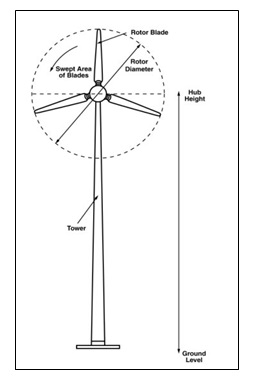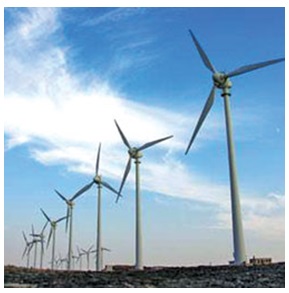Introduction
In the world we live in today, energy is a very important resource to our day to day living. Energy is a backbone in running almost all human activities like cooking, food production, storage, etc. In the investigations, Balakrishnan (2006) admits that it is necessary to classify energy which includes renewable and non-renewable sources of energy to comprehend the true essence of energy in human lives. It can further be divided into natural and man-made energy. It is under natural sources that wind is placed. Other natural sources include solar energy, geothermal energy, water energy and many others. Most natural resources are free and could be harnessed by anyone who has the machinery to transform the energy. People made energy a bit expensive to produce it on a daily basis, as a result of such decision most people and countries have to maximize on the natural sources.
Purpose
The purpose of this study is to analyse the appropriate energy resources of the village which may be used in rural areas taking into consideration the fact that rural areas have a poor economy and a limited number of energy resources. The study will help to improve the living conditions of rural areas, and the village Shikalabuna.
Scope
Since wind power is an issue known to the citizens of Sri Lanka, the scope of the project will consider three main aspects: identification of the place for the project, evaluation of positive and negative aspects of the ideas, and transmission of the energy throughout the village.
Sources and Methods
The study requires quantitative research by means of which it is possible to identify the weaknesses of village life and the necessity to use wind energy as the only source for its citizens and prove that wind power is a reasonable and, what is more important, reliable substitution for people. The quantitative method allows considering the quality of life and well as citizens’ needs, and information gathered from the citizens as well as current investigations will become the sources to rely on.
Limitations and Assumptions
It is necessary to admit that it is hard to consider the opinion of each citizen of the village, this is why some data cannot be as precise as necessary. Limited literary sources are offered to investigate the chosen field, so, it is better to consider all data offered approximately.
Background
Rural areas in Sri Lanka and the chosen village Shikalabuna are characterized by a number of activities that could be run with the help of wind energy. Food production can be increased with the help of irrigation which can be run directly from the wind turbines or through the production of electricity which power water pumps used for irrigation. GWEC (Chandrasenal et al. 2006) reports that “the total wind power generating capacity has increased by 20% during the year 2004” (p. 221), this is why it seems to be a good attempt to improve the conditions of life in Shikalabuna utilizing wind power. Village life in Sri Lanka is rich indeed, and if there is a chance to make some improvement and provide people with an opportunity to create more appropriate conditions for work and entertainment, the citizens of the villages are ready to cooperate with the government and introduce more powerful ideas.
The idea to use wind energy in one of the villages of Sri Lanka has a number of positive and negative aspects. Still, the success of such a project is predetermined by the activities taken to gather and evaluate information as well as attention to the technical aspects of rural areas.
Advantages and Disadvantages
Wind energy has numerous merits. For a start wind energy is inexhaustible. Being a natural resource, wind energy cannot be exhausted. So long as there is a flow of air wind energy can always be harvested. Another positive aspect of the project is its impact on air and land pollution: due to its natural basis, each wind turbine is environmentally friendly for the citizens of Shikalabuna (Jagadeesh 1999, p. 157).
Despite all the merits wind energy has, it also has some disadvantages. As much as wind energy is not free just anyone can harness the energy as one needs to install turbines and motors that are used for energy conversion (Mirza et al. 2007, p. 2186). Turbines are quite costly and due to this reason, wind energy production is limited to those who are capable to purchase the turbines. Still, it is possible to address the government of Sri Lanka in order to get some financial support to prove that certain current expenses will help to save more money with time. What is required is to try.
Description of the Ideas
As soon as the place for the turbines is chosen, it is time to think about the cleanest and most uncluttered methods of installation that should be considered (Gipe, 1999, p.47). Through the interviews with the citizens of Shikalabuna, it becomes clear that there are fields where a number of wind turbines may be placed. Still, unsafe background requires certain improvement before the turbines are installed, this is why it is better to use concrete platforms which will be under control. The turbines will help to provide electricity to many sources like central grids and some isolated grids which are frequent in Shikalabuna and support the idea of water pumping. The chosen idea will promote the reduction of transmission and distribution of losses and allow the development of roads around the turbines.
Illustrative Material
The following images should be taken into consideration to understand how the turbine will look on the fields of Shikalabuna.


Findings and Analysis
The turbines spin magnetic motors to which convert kinetic energy from the wind to electric energy which can either be used as it is or stored for future use. The amount of energy produced by the wind is directly dependent on the speed of wind the higher the wind velocity the higher the energy produced. High wind speeds translate to a powerful wind which would increase the rotations of the turbines increasing the motor rotation. Given that one propeller cannot produce enough energy many turbines are installed in a large piece of land by this it would help harness maximum wind energy. People of rural areas of Sri Lanka should get their chance to save on energy, and this project should help them.
Conclusion
In general, the main idea of the project is to prove that even rural areas are ready for certain improvements and offers. The point is that innovations require certain financial support, therefore, it is crucially important to involve the government in the development of wind energy for people in rural areas. Though the necessary requirement is not cheap, the analysis shows that current expenses will be justified by savings on electricity in future.
Reference List
Balakrishnan, J 2006, “Renewable Energy and Distributed Generation in Rural Villages”, First International Conference on Industrial and Information Systems, pp. 190-195.
Chandrasenal, RPS, Vikkitharan, G, Arulampalam A, & Ekanayake, JB 2006, “Constraints for the development of wind power generation in Sri Lanka”, First International Conference on Industrial and Information System, pp. 221-226.
Gipe, P 1999, Wind energy basics: A guide to small and micro wind systems. Chelsea Green Publishing, White River Junction.
Jagadeesh, A 1999, “Wind energy development in Tamil Nadu and Andhra Pradesh, India Institutional dynamics and barriers – A case study”, Energy Policy, 28, pp.157-168.
Mirza, UK., Ahmad, N, Majeed, T, Harijan, K 2007, “Wind energy development in Pakistan”, Renewable and Sustainable Energy Reviews, 11, pp. 2179-2190.